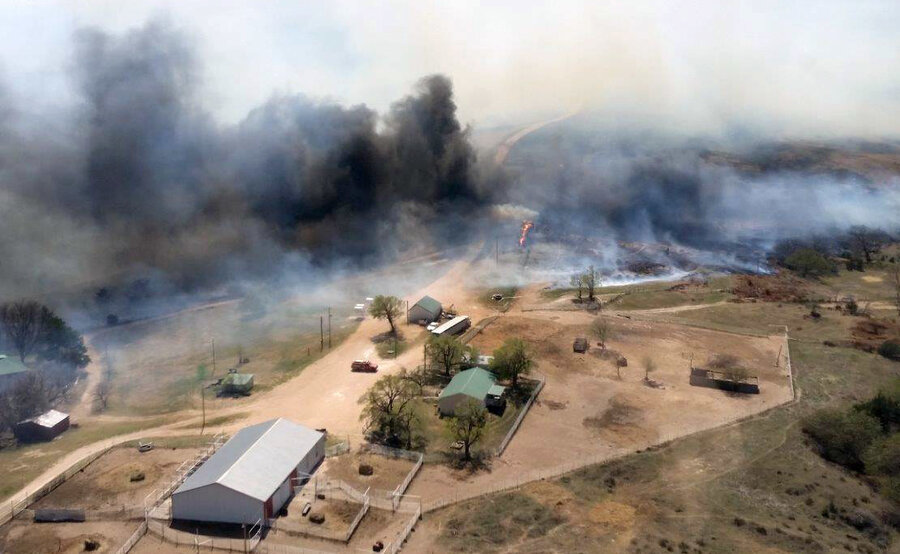As largest wildfire in Kansas history rages, help from unlikely sources
After four days, the worst wildfire in Kansas history continues to burn through the south-central portion of the state.
After starting Tuesday in Oklahoma for unknown reasons, the Anderson Creek Fire has crossed state lines and burned more than 400,000 acres as of Sunday, making it the worst fire in Kansas history. But the Kansas Forest Service says the Anderson Creek Fire is about 90 percent contained overall as of Sunday night, with Barber County (the fire’s ground zero, representing more than 68 percent of the overall burned acreage) at 81 percent containment.
“We get tornadoes, blizzards, floods,” Kansas Gov. Sam Brownback, who declared a state of emergency last week, told The New York Times. “But big wildfires, we don’t get that often.” And to forcefully fight a wildfire that burned through an area about half the size of Rhode Island, Kansas has had help from some unlikely sources.
The Kansas National Guard has stepped in to assist. Four UH-60 Black Hawk helicopters were deployed to the area Saturday, with two of the choppers dousing the flames with 660 gallons of water. The National Guard has also contributed a fuel tanker truck and ground support.
Along with professional firefighters from four states, Hutchinson Community College fire science students are among the volunteers fighting the blaze. First using the fire as a training exercise, and eventually fighting alongside their mentors after it became clear that the fire demanded additional manpower.
“It makes you realize how fortunate we are to live in a small town in Kansas, because when things go awry, people rally,” John Nixon, a broker and auctioneer in Medicine Lodge, a town of about 2,000 in Barber County, tells The Wichita Eagle.
And the most recent firefighting ally turned out to be the Easter Sunday’s forecast. Rescue workers and residents in Barber County woke up to almost four inches of snow Sunday morning.
“Ranchers in the area said the snow was the best thing that could have happened to them when it comes to fighting fire in Barber County,” reports KWCH12 News. “Rain would have just washed everything away, but the slow melting of the snow will let the water sink into the ground.”
The geography of southern Kansas makes fighting wildfires logistically difficult.
“Much of Kansas, there’s a section of road every mile. You can drive a mile ahead of it and take a line” against the fire, Eric Ward, a fire-planning specialist with the Kansas Forest Service, tells The New York Times. “Down here, there’s a lot of pretty much unbroken country, and the only thing breaking it is the canyons you can’t cross.”
At its current rate, Kansas’ present fire is the fourth worst individual wildfire in the 21st century. The Wallow Fire, which occurred on May 29, 2011, burned 538,000 acres throughout New Mexico and Arizona. The Murphy Complex Fire burned 653,100 acres throughout Idaho and Nevada on July 16, 2007, and the Taylor Complex Fire burned almost 1.4 million acres in Alaska on June 12, 2004.
“Obviously with the snow, it’s a great deal of help, but this is not over for us,” Barber County Attorney Gaten Wood tells KWCH12 News. Costs of fighting the Anderson Creek Fire have already surpassed $1 million, excluding individual landowner losses, the Black Hawks’ assistance and the cost of Barber County crews.







